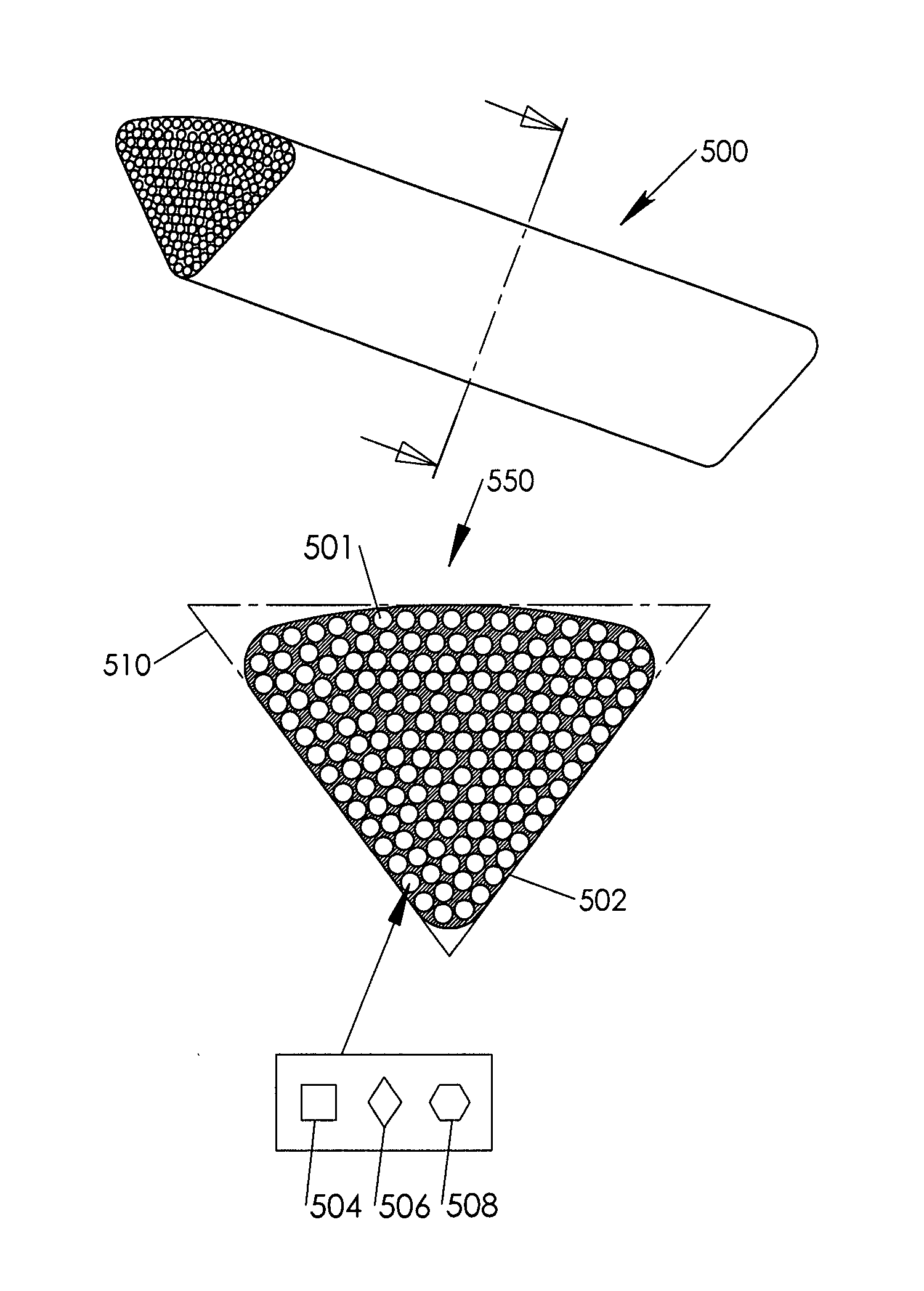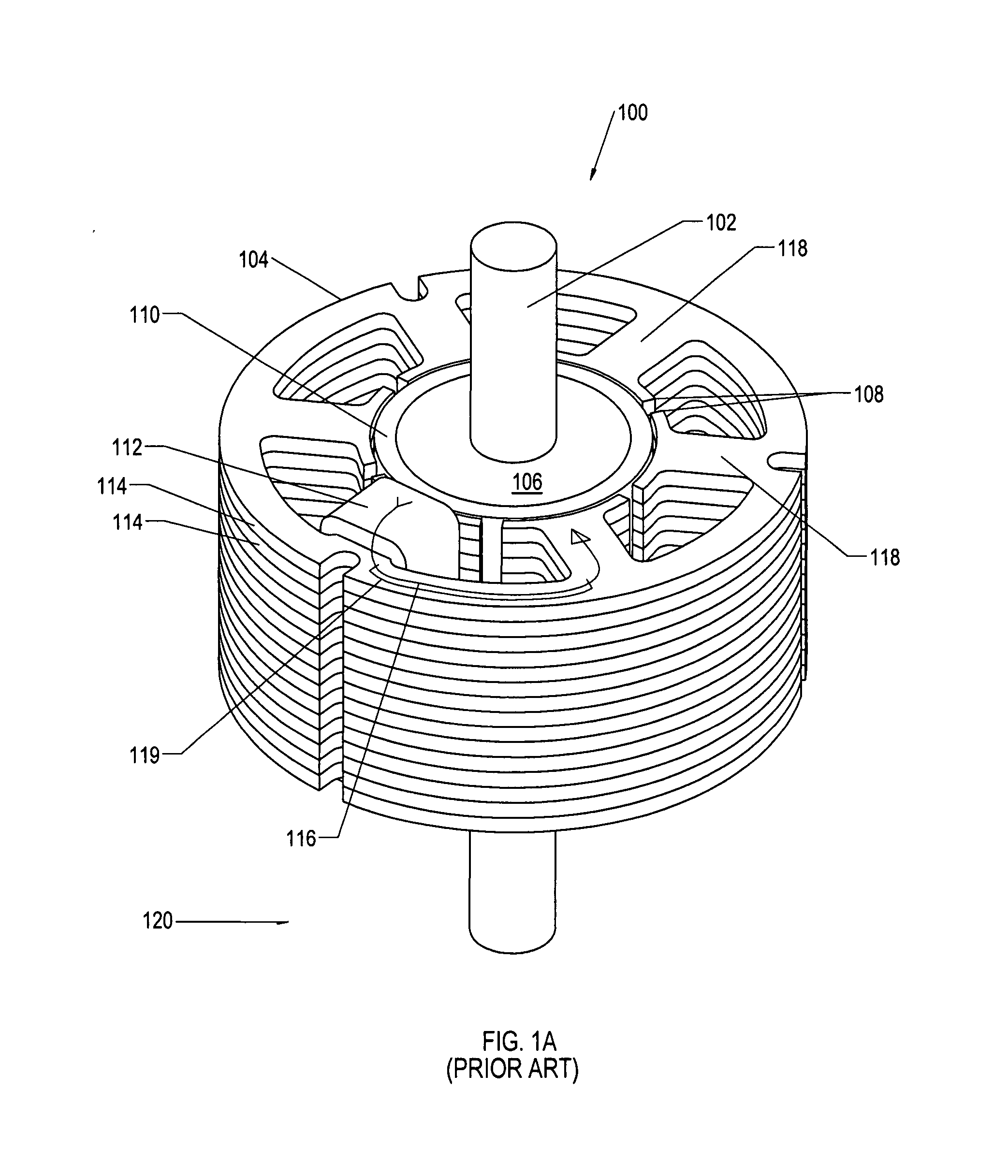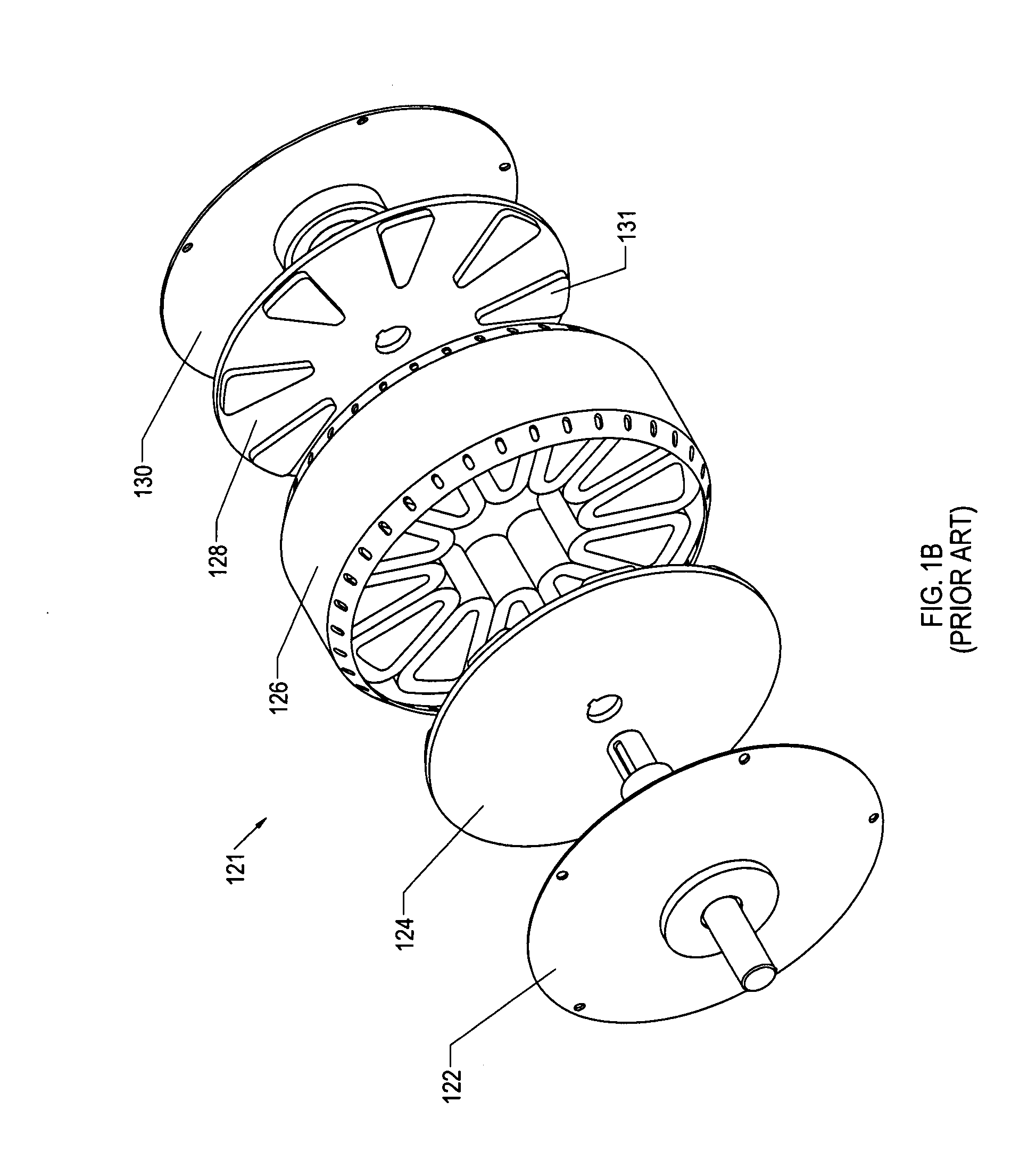Field pole members and methods of forming same for electrodynamic machines
a field pole and electrodynamic machine technology, applied in the direction of magnetic circuits, magnetic circuits characterised by magnetic materials, magnetic circuit shapes/forms/construction, etc., can solve the problems of increasing the form factor of motors and materials, increasing the cost of materials to manufacture such motors, and increasing the length of magnetic flux paths. , to achieve the effect of reducing manufacturing costs, increasing torque and/or efficiency per unit size, and reducing the length of magnetic flux paths
- Summary
- Abstract
- Description
- Claims
- Application Information
AI Technical Summary
Benefits of technology
Problems solved by technology
Method used
Image
Examples
Embodiment Construction
Definitions
[0034] The following definitions apply to some of the elements described with respect to some embodiments of the invention. These definitions may likewise be expanded upon herein.
[0035] As used herein, the term “air gap” refers to a space, or a gap, between a magnet surface and a confronting pole face. Such a space can be physically described as a volume bounded at least by the areas of the magnet surface and the pole face. An air gap functions to enable relative motion between a rotor and a stator, and to define a flux interaction region. Although an air gap is typically filled with air, it need not be so limiting.
[0036] As used herein, the term “back-iron” commonly describes a physical structure (as well as the materials giving rise to that physical structure) that is often used to complete an otherwise open magnetic circuit. In particular, back-iron structures are generally used only to transfer magnetic flux from one magnetic circuit element to another, such as eit...
PUM
| Property | Measurement | Unit |
|---|---|---|
| temperatures | aaaaa | aaaaa |
| magnetic flux | aaaaa | aaaaa |
| length | aaaaa | aaaaa |
Abstract
Description
Claims
Application Information
 Login to View More
Login to View More - R&D
- Intellectual Property
- Life Sciences
- Materials
- Tech Scout
- Unparalleled Data Quality
- Higher Quality Content
- 60% Fewer Hallucinations
Browse by: Latest US Patents, China's latest patents, Technical Efficacy Thesaurus, Application Domain, Technology Topic, Popular Technical Reports.
© 2025 PatSnap. All rights reserved.Legal|Privacy policy|Modern Slavery Act Transparency Statement|Sitemap|About US| Contact US: help@patsnap.com



